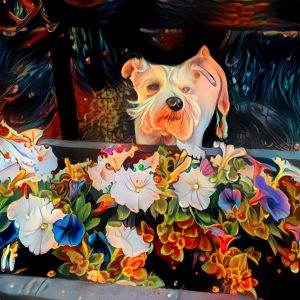Defining Artificial Intelligence
Artificial intelligence can be defined as a automated system that is able to think and analyze vast amounts of data and make conclusions based in its observations. Ideally these automated systems can be programmed to “think” like a human and mimic their actions, thus giving it the ability to rationalize and achieve a specific goal. AI machines are wired using a cross-disciplinary approach based in mathematics, computer science, linguistics and psychology (Heath, 2018). Examples of AI systems could include chess playing computers, which have been in use for a number of decades, to self-driving cars which are coming more prevalent today.
Machine Learning
Machine Learning is a branch of AI concerned with building systems that require minimal human intervention. The system is able to take a set a data and make a logical prediction based on this. When a system receives a large amount of data a machine learning algorithm can specify certain characteristics of this data in order to draw a conclusion. This ability to analyse large amounts of data is known as ‘deep learning.’ With such algorithms in place machine learning systems are able to perform such tasks as detecting cancer, sort cucumbers and detect faults in escalators (Heath, 2018).
An example of machine learning in action is the computer program AlphaGo Zero. This was the first computer program that could defeat the world champion of the ancient Chinese board game of Go. DeepMind’s Professor David Silver describes how AlphaGo Zero taught itself to be the best Go player to ever exist. Watch the video below to get a better understanding of machine learning in action.
AI Demos
There are many AI demos available to try out online. You are encouraged to test some of them out. Experiments with Google is a large collection of simple AI experiments built around Google’s tools. Below are some recommended demos to try but feel free to seek out what interests you. As you test out the technology consider applications in education.
- Quick Draw with Google uses a neural network to recognize doodling. Your doodles contribute to the public data set to help with machine learning.
2. Teachable Machine with Google allows you to experience teaching a machine using your web camera with no coding required.
3. Deep Dream Generator is another Google A.I. experiment. This program uses computer vision to process images using patterns. The result is a dream-like creation. Below is the deep dream generator in action. This isn’t a filter! If you look closely the flowers have been “drawn” by Google’s AI.

Deep Dream Generator Schnauzer with Flowers
What Can AI Do For Educators?
The Automation of Administrative Tasks
A large percentage of time for most jobs includes some form of tedious administrative tasks. For educators this might look like:
- Ensuring compliance with school or company policies by maintaining detailed records
- Scheduling meetings, courses, events, or timetables
- Answering basic questions by phone or email
- Generating learner reports
Although the topic might seem less exciting than other areas of A.I. it has immense potential and a winning sales pitch. The more educators can outsource these tasks to computers the more time they have to work directly with their learners. Educators can focus on the parts of their job that they find most rewarding.
A.I. Personal Assistants Are Already Here
The technology is here or quickly approaching to automate many of the administrative tasks that make up our work. At the Google I/O 2018 the company demoed their Google Assistant technology that runs on phones, smart speakers, and computers making a phone call and booking a haircut. If you listen carefully you may notice the audible gasps from the audience.
Watch below:
Addition of Smart Content
Are you familiar with TL;DR (too long didn’t read)? After a lengthy social media post you might see a TL;DR summary at the bottom. If you browse Reddit you’ve probably come across a news bot that automatically generates fairly accurate summaries of news articles. That same technology can be used to generate study notes, flashcards, and other types of content. One company is already applying that technology to textbooks and selling directly to learners.
TL;DR bots can make stuff.
Smart Tutors and Personalization
AI offers possibilities to personalize learning at a level once unfathomable. It’s easy to see how smart tutors and personalization make for a compelling sales pitch. Some examples of companies in this area are highlighted in the link below.
